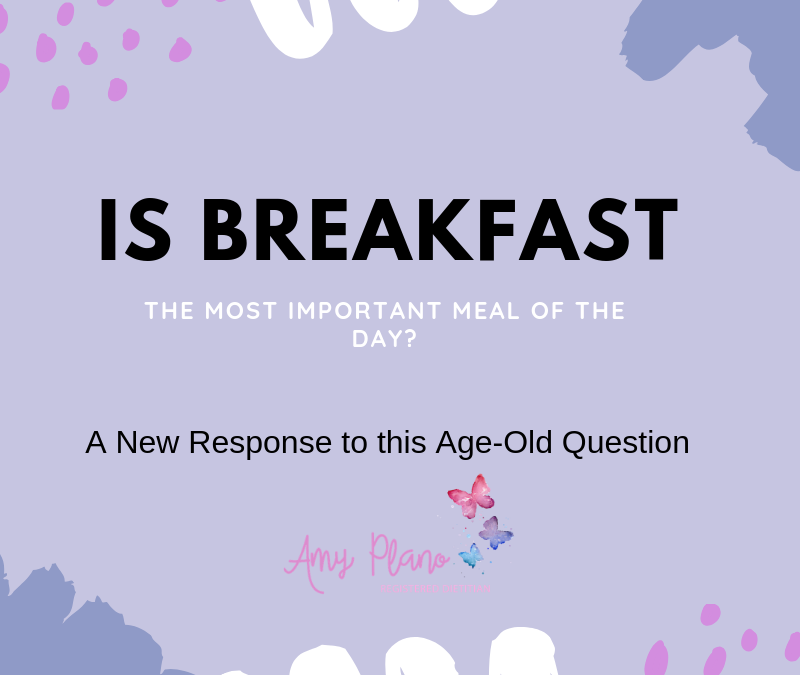
by Amy Plano | Sep 24, 2018 | intermittent fasting, metabolism
Is Breakfast the Most Important Meal of the Day?
Back in the day (many, many, many moons ago!) when I was in grad school I remember one thing being drilled into our heads by our Professors – “Encourage your patients to eat more often.” For years, we’ve been told it’s important to eat breakfast within an hour of waking up in an effort to ‘rev up’ our metabolism. To this day, we preach to our patients to eat small, frequent meals and snacks throughout the day to the same effect. But a more recent trend, intermittent fasting, seems to have thrown a cog in the wheel of this nonsense we have been propagating for way too long. This highly effective technique relies on restricting your eating to set times and alternating between feasting and fasting.
The goal of this blog is to define the most popular form of intermittent fasting 16:8, its health implications as well why it seems to work. Future blogs will address the details of IF including when and what to eat as well as the new emerging research as it relates to weight loss, diabetes prevention and reversal as well as optimizing body composition.
What is intermittent fasting?
Intermittent fasting is a hot topic. No matter where I seem to go – someone seems to be chatting up intermittent fasting (IF). But what the heck is IF? And more importantly why is everyone talking about it?
Intermittent fasting has recently emerged as a popular eating style. IF has dietary implications for everything from weight management, to mitigating inflammation to even decreasing the ugly symptoms of chemotherapy. Research suggests the timing of the fast is key. This powerful approach to eating has the potential for IF to serve as a realistic, sustainable, and effective approach for weight loss, as well as for diabetes prevention (1).

In an attempt to streamline my efforts, this blog (and future blogs on the topic) will focus on the body composition and the weight management applications of intermittent fasting. However, that does not mean the other benefits are less important. It just means the questions I receive most commonly in my practice relate to weight loss. So it makes sense to address this aspect.
16:8 the most popular approach to intermittent fasting
There are various formats for intermittent fasting. The most common approach is referred to as time restricted intermittent fasting. In the most basic sense time restricted IF involves eating your caloric intake within a finite period (generally 8 hours) followed by a period of non-eating or fasting (generally 16 hours). This is the most popular approach to intermittent fasting and is commonly referred to as the 16:8 approach to intermittent fasting.
The 16:8 approach by definition is simple. The ‘16’ refers to the hours in which we are not eating and the ‘8’ refers to the eating window in which we are eating.
Depending upon when someone decides to execute their 16-hour fast it is very possible they might actually be sleeping for a majority of the time they are fasting! More so, for most people participating in this style of eating they are simply skipping breakfast and consequently having lunch as their first meal. If your mornings are pretty busy, or you just don’t love eating first thing in the morning – the time seems to fly by. Making this approach particularly easier than other formats such as “The 5:2 Diet” were you are encouraged to eat 500 – 600 calories on two non-consecutive days or “The Alternative Fast Diet” where you fast every other day.
Alternate day fasting is quite an extreme form of intermittent fasting. It may not be suitable for beginners or those with certain medical conditions. It may also be difficult to maintain this type of fasting in the long-term. Each person’s experience of intermittent fasting is individual, and different styles will suit different people. However, from my clinical experience I have seen the most success and compliance with the 16:8 approach to intermittent fasting.
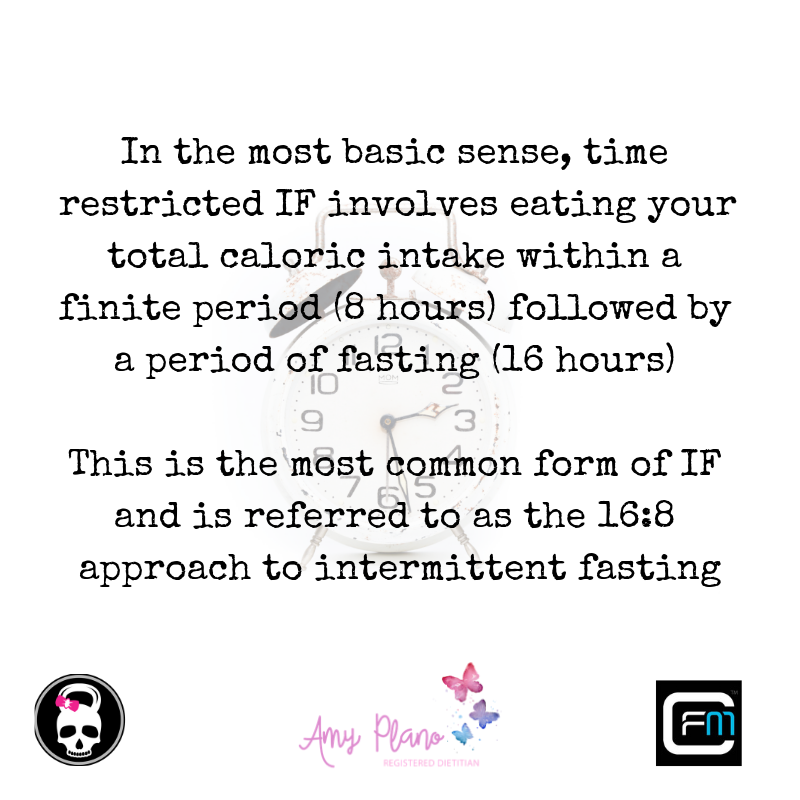
So sounds pretty simple, right? You eat for 8 hours. You fast for 16 hours. But why is that eating window so dang important? SO glad you asked.
The power of insulin and intermittent fasting
Believe it or not there is one thing that pretty much controls how effectively we lose weight. This crucial thing is called insulin. Insulin is a powerful hormone secreted by the pancreas. Truth be told – insulin is pretty much responsible for the fate of our fat cells.
You see when we eat our body breaks down food into smaller components. One of these smaller units is glucose (aka sugar). The glucose from our food enters our bloodstream to be transported to our cells where it is processed and used to fuel the body. While glucose helps provide our cells with the energy they need to do their jobs; its very presence increases our levels of insulin.
Once the body receives the signal you’ve eaten, insulin is produced and released in response to glucose. Unfortunately, when the body senses high levels of circulating insulin it only hears one message and one message only, “Store excess calories as fat.” Insulin slows down fat burning while the body instead burns glucose from its last meal.
For that reason, from a body composition standpoint we want keep insulin levels as low as possible (2). We don’t want no stinkin’ fat storage! Do we? No, thank you!

I want you to think about insulin like the mission control center of your fat cells. The presence of insulin dictates whether we store calories as fat or burn them for energy. Take for example the fed state. After we have eaten a mixed meal (one with carbohydrates, protein and fat) insulin increases and a message is sent to our body to store fat. However, when we are not eating – that message is silenced. During the fasting state, the body burns more stored fat for energy. And guess what – if we burn more fat as fuel we are more likely to optimize our body composition. Bingo – now we are on to something!
So, is breakfast the most important meal of the day? Heck no!
So that reminds me. Let’s go back to that original scenario. Remember the one that has been drilled into your head about eating small frequent meals and snacks? The one that always – no matter what – starts with consuming a big healthy breakfast. Does it now make sense why that method is pretty much counter productive to optimizing body fat?
Think about it. If we are eating every couple of hours in an effort to as they used to say ‘put fuel on the fire’ what is constantly high? Insulin, right? If insulin is constantly high your body is constantly shoveling excess calories into your fat cells. No bueno!
Conclusion
So bottom line, in the fed state, insulin is elevated, and this signals your body to store excess calories in your fat cells. In the presence of insulin, the burning of fat is halted, while the body burns glucose (from your last meal) instead.
In the fasted state, insulin is low. The body starts mobilizing stored body fat from your fat cells and burns this fat for energy (instead of glucose).
The practical importance of all this? By choosing to follow a 16:8 time restricted form of intermittent fasting where you eat for 8 hours and fast for 16 hours you can optimize your body composition. By choosing this pattern of eating you are limiting the time in which your body is releasing insulin. Thus prompting your body to burn stored body fat while in the fasted state, while minimizing fat storage in the fed state.
In our next blog on this topic we will dive into the specifics of the 16:8 approach to intermittent fasting. I will teach you how to apply the 16:8 approach, how to choose the best time frame for the fast/fed state as well guide you on what to eat.
Don’t miss out on this exciting event
Did this blog get your noggin thinking? Want to learn more about the applications of intermittent fasting? If so – please come and hear Marc and I present on this very topic this Saturday, 9/29 at 11:30 am at Crossfit Milford. I guarantee this is an event you DO NOT want to miss.
Looking for further customization on your diet? All this talk about intermittent fasting got you confused? Then go ahead and make an appointment with either Audrey or Emily in my practice and they will help you come up with a customized meal plan using intermittent fasting.
Hugs & High Fives, Amy
P.S. Did you know The Plano Program Dietitians accept most health insurance? We sure do!
P.P.S. Love the information presented on intermittent fasting? Have a friend who you think could benefit? Please share the social love ♥
References
(1) Patterson RE, Laughlin GA, Sears DD, et al. Intermittent Fasting on Metabolic Health. Journal of the Academy of Nutrition and Dietetics. 2015;115(8):1203-1212.
(2) Tinsley GM, La Bounty PM. Effects of intermittent fasting on body composition and clinical health markers in humans. Nutrition reviews. 2015 Oct 1;73(10):661-74.
by Amy Plano | Jul 9, 2018 | metabolism, weight loss
What is metabolic testing ?
The million dollar question on everyone’s mind, “what is metabolic testing ?” Many people have heard the term but have no clue what to expect from metabolic testing. The goal of this blog is to clarify this information and tell you exactly how to prepare for the testing to ensure the best results.
Trust me – there is absolutely nothing remotely scary about having your metabolism tested. In fact – I can almost guarantee you will be skipping out of my office with the new information in hand like a kid on Christmas day. Now let’s chat about how to prepare for metabolism testing.
First things first, metabolism testing does not hurt. I promise! We don’t draw blood. Also there is NO physical exertion involved. In the past, I have had patients show up in their workout gear thinking they were going to participate in something that might resemble a stress test. This is certainly not the case. So no worries you can leave your running shoes at home!
The device we use to measure your metabolism is called the Bodygem. This device measures your metabolism by capturing the air you breath.
Sounds pretty easy? Well it is.

Three things to do to prepare for the metabolism test:
Come fasted with no caffeine in your system for 4 hours prior to your test. You can drink plenty of water though!
Please don’t exercise within 4 hours of the test.
Arrive not having smoked a cigarette within 4 hours of the test.
Caffeine, exercise, and nicotine all can slightly increase your metabolic rate. Therefore, we do our best to minimize these variables so we can deliver you the most accurate results.
Curious about what other factors might influence your metabolism? Check out last week’s informative blog “RMR Testing 101” on this exact topic.
The actual test
Once you arrive we will get you all set up! You will sit peacefully in a chair with a small mouth tube in your mouth and a cute little nose clip on. The goal of the nose clip is to create a vacuum seal so no air escapes.
I promise, I will not post any Facebook pictures with your sexy nose clip on:)
By measuring both the amount of oxygen you exhale and the amount of carbon dioxide you expire we are able to calculate your metabolism. It’s that simple. This method is called indirect calorimetry and is one of the most accurate ways to measure metabolism. The test itself takes about 10 minutes.
Like I mentioned, the test does not hurt. However, some people find it uncomfortable as you need to breathe through your mouth for the duration of the test.
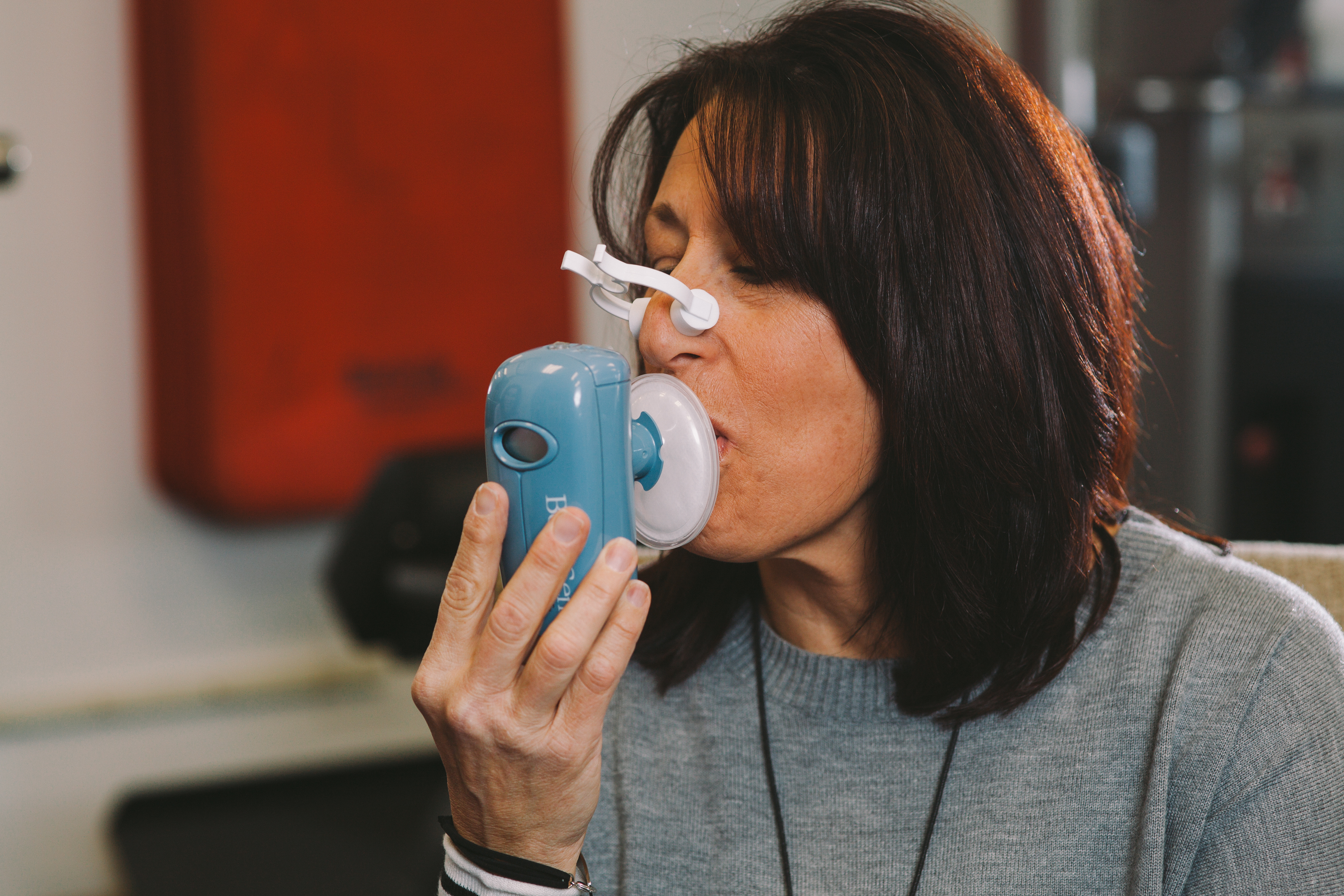
Once the test is complete we need to talk goals. Generally speaking my patients generally have three types of goals – they want to lose weight, maintain their weight or gain weight. Therefore, the next step will be tol weigh you and test your body fat. That way we have a starting point for you to gauge your progress.
Next, we will gather your demographics. Factors such as your age, sex, occupation, type and frequency of exercise, and even your sleep patterns are all important variables in determining an appropriate calorie level for your goals. All this information is then entered into a software program which then generates several important numbers.

The Bodygem tells us the following:
Exactly how many calories you need to take in on the days you workout
Exactly how many calories you need to take in on your non-training (rest) days.
How you compare to other individuals with the same demographics
Your BMI
Once we have this important information we can then specifically tell you where your calories need to be to accomplish your specific goals. We can also make suggestions on your macros if that is something you are interested in. If you need help setting up these numbers in a tracking program like MyfitnessPal we are happy to help guide you as well.
If you need additional services like a customized meal planner with specific meal suggestions or guidance on how to incorporate carbohydrate cycling or intermittent fasting these can all be provided at an additional fee.
The entire metabolic test plus the consult should take no longer than 45 minutes. You will leave with a personalized print out with your results and a solid knowledge of what is metabolic testing really entails. No guesswork involved!
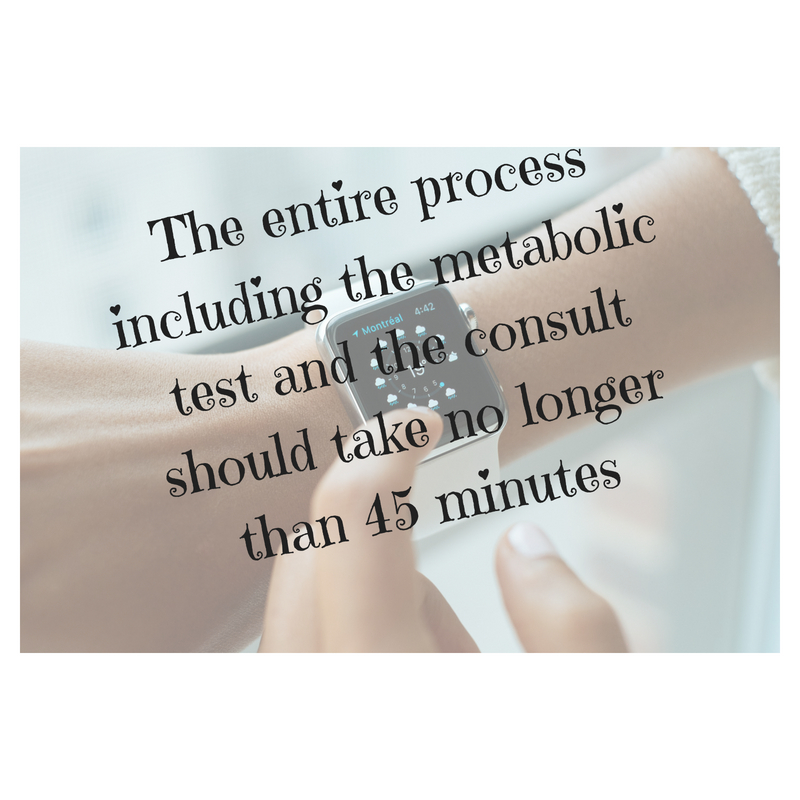
On next week’s blog we will dive deeper into the results. We will interpret the results of three actual Bodygem results and discuss how to apply the information. So now when someone asks you the question, ” what is metabolic testing ” you will be able to give them a A+ answer 🙂
P.S. The icing on the cake is if you purchase the metabolism test during the month of July you will be entitled to a 40 % discount for my birthday. Just use coupon code thisis40 when you schedule your metabolism test on www.amyplano.com to receive the discount. However, act fast as this discount will only be around until July 31, 2018.
Have questions on metabolic testing? Please don’t be shy! Ask in the comments section below.
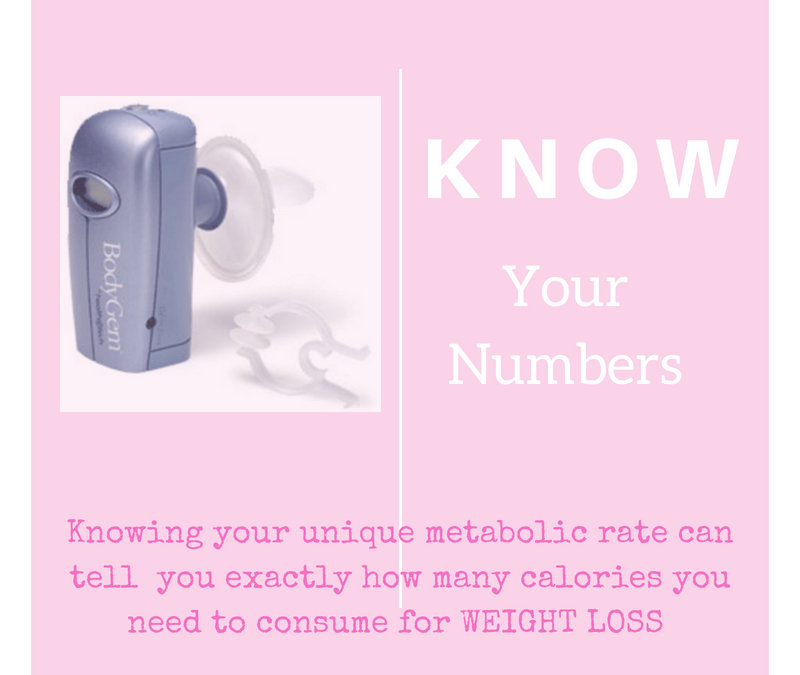
by Amy Plano | Jul 2, 2018 | metabolism, weight loss
Are you unable to lose weight in spite of vigorous exercise and a disciplined training schedule? Are you looking to maximize your performance yet feel like despite all your efforts you are failing miserably? Have you hit a plateau in your weight loss? Would you like to take the “guesswork” out of determining your calories to achieve your goals? Well if you answered “heck yes” to any of the above questions then you are likely the perfect candidate for RMR testing.
What is Metabolism
First things first, before we talk about RMR testing and why it is so friggin’ important we need to define metabolism. Did you know that even when you’re at rest, your body needs energy for its “silent” functions? These include breathing, circulating blood, adjusting hormone levels, and growing and repairing cells. The number of calories your body uses to carry out these basic functions is known as your basal metabolic rate (BMR) or more often referred to outside of a clinical setting as resting metabolic rate (RMR).
There are many factors which determine our metabolism. Some include:
Your body size and composition.
People who are larger or have more muscle burn more calories. Even at rest these folks tend to have higher RMR’s.
Your sex.
Men usually have less body fat and more muscle than do women of the same age and weight. This means men burn more calories at rest (Boo!). But don’t worry, I will be sharing some tips for how us chicks can optimize our metabolisms.
Your age.
As we get older (sigh), the amount of muscle we carry tends to decrease. Fat accounts for more of our weight, slowing down calorie burning. [Tip: If you consistently work out with weights you can help off-set some of this loss 🙂 ]

Two other important factors that determine how many calories your body burns each day:
Food processing (we call this thermogenesis!)
Did you know that digesting, absorbing, transporting and storing the food you consume also expends calories? Score! About 10 percent of the calories you burn each day come from the digestion and absorption of food and nutrients.
Physical activity
Physical activity and exercise accounts for the rest of the calories your body burns up each day. It comes as no surprise that physical activity is by far the most variable of all the factors.

The changes in overall body mass (increase or decrease) ultimately comes down to long-term energy balance which is represented by energy in (via food) and energy out (via metabolic rate). Total energy expenditure is determined by many factors including: body composition, sex, age, thermogenesis and physical activity. Having ‘good’ genetics certainly doesn’t hurt either! So now that you are a master of ‘all terms metabolism’ let’s get down to business.
Here are my top three reasons for why getting your RMR tested is SO important to achieving your body composition and training related goals
1. Takes the guesswork out.
By having your metabolism tested by a professional you never need to ask yourself the annoying questions, “How much or little should I be eating ?!?”
How many times have you entered your height and weight into an online metabolism calculator only to get some crazy number which you have no idea how to interpret?
I cannot tell you how many times patients come into my office following a calorie level that is completely wrong for the goals they are trying to accomplish. This frustrates the heck out of me. It’s not that they are unsuccessful for lack of trying. It’s simply because they have been provided with the wrong information.
By testing your RMR you will now know the exact number of calories your body needs to accomplish your dietary and fitness related goals. There is no more guessing or even second guessing where your calories need to be! Through the use cutting edge technology we can help you determine the exact amount of calories you need to reach your goals. Headache solved!
2. Gives you an accurate baseline.
If you don’t know your baseline calorie needs how do you know if what you are doing is ‘working’?
You have got big goals which I love and admire. However, how can you accomplish your long-term goals if you don’t know where your baseline needs currently are? Testing your metabolism before you make significant changes to your exercise and/or training routine can provide you with a solid foundation in which to make adaptations. Therefore, as things like your body composition, weight and/or performance markers change over time you can adjust your calories relative to your new goals.
Independent of what our specific goals are we all need a caloric starting point. If we don’t have a baseline and we start making changes to our diet how can we tell what specific calorie level is working? Simply put – we can’t.
Therefore, by testing your RMR before making any significant dietary and/ or training changes you are armed with an accurate, reliable calorie level to base your goals on.
3. It helps you when you are stumped.
Knowing your RMR gives you clarity in those moments when no matter how hard you try – you just cannot seem to tackle your dietary and/or fitness goals.
Knowing your your RMR can be critical when you are stumped. As mentioned previously many people base their goals around a calorie level that is not in tune with their goals. Along with the headache this creates can come a massive amount of frustration. Unfortunately, if you have been there you know exactly what I am talking about 🙁
Trying to gain lean muscle mass but struggling like crazy? It could be that your calories are too low. We all know that in order to build anything we need ‘extra’ resources, right? That extra might be money, resources or time. Same goes for putting on muscle. In this case, the extra needs to be in the form of calories. Therefore, for someone aiming to put on muscle they need to FIRST make sure they are taking in enough calories to do.

On the flip side, do you feel like you are at a weight loss plateau? Are you meticulously counting calories, carbs, protein and everything under the sun and still not losing weight? Is MyFitnessPal definitely not your pal? For most people the simple answer is their calories are not in tune with their weight loss goals. It could be that their calories are too low. Or it could mean that their calories are too high. How the heck will they know unless they actually test their metabolism?
Knowing your unique RMR for the different ‘seasons’ can help optimize your nutrition during both your off-season and peak training periods. During training, you need to make sure you are taking in enough calories to support not only your training but your ideal body composition for your sport. It’s no surprise when an athlete is not taking in enough calories how quickly they feel the side effects. Unintentional weight can lead to fatigue, burnout and injury. All of these can be factors can be minimized if not avoided entirely.

Leave nothing on the table when it comes to your training. Mama did not raise no fool 🙂
Case in point – I rest my case. Plain and simple – anyone with a performance or body composition related goal should have their metabolism tested. And truth be told I don’t know a whole lot of people who don’t share these goals (especially the later!) By testing your RMR you will no longer be ‘spinning your wheels.’ The precise tools you need to determine the exact calorie level to fit your specific goals is attainable. And just like Jim Rohn’s stated, “When you know what you want and you want it bad enough, you’ll find a way to get it.”
P.S. Did you know we are running a 40 % discount on RMR testing for the month of July? Use the coupon code thisis40 when scheduling your metabolism testing under the ‘appointments’ tab on our website www.amyplano.com
P.P.S. What are you waiting for? This fantastic deal will not be around forever. Cut through all the confusion and get the numbers you need.
P.P.P.S. Does any of this mumbo-jumbo about RMR testing resonate with YOU? If so, in what way? Share your thoughts in the comments below. We ♥ to hear your thoughts. Don’t be shy – we don’t bite.
by Amy Plano | Jun 25, 2018 | metabolism, weight loss
So it is true … this girl right here turns 40 years old on Friday, June 29th. And what better way to celebrate my 40th then with YOU my loyal readers. So how would you like to receive a present from me? How does a 40 % discount on a metabolism test to celebrate this fabulous occasion sound? I don’t know about you but it sounds pretty dang awesome to me.

Heading into the next decade can be a drag. So rather than have a pity party for myself I decided to give you a pretty sweet present to mark this milestone birthday – 40 % off metabolism testing for the whole month of July. Whoot! Whoot!
For the whole month of July redeem coupon code thisis40 when scheduling your metabolism test to receive 40 % off each individual test. The normal rate for a metabolism test is $150.00. Therefore, by redeeming the code thisis40 you save yourself 60 bucks! If that is not pretty sweet – then I don’t know what is.
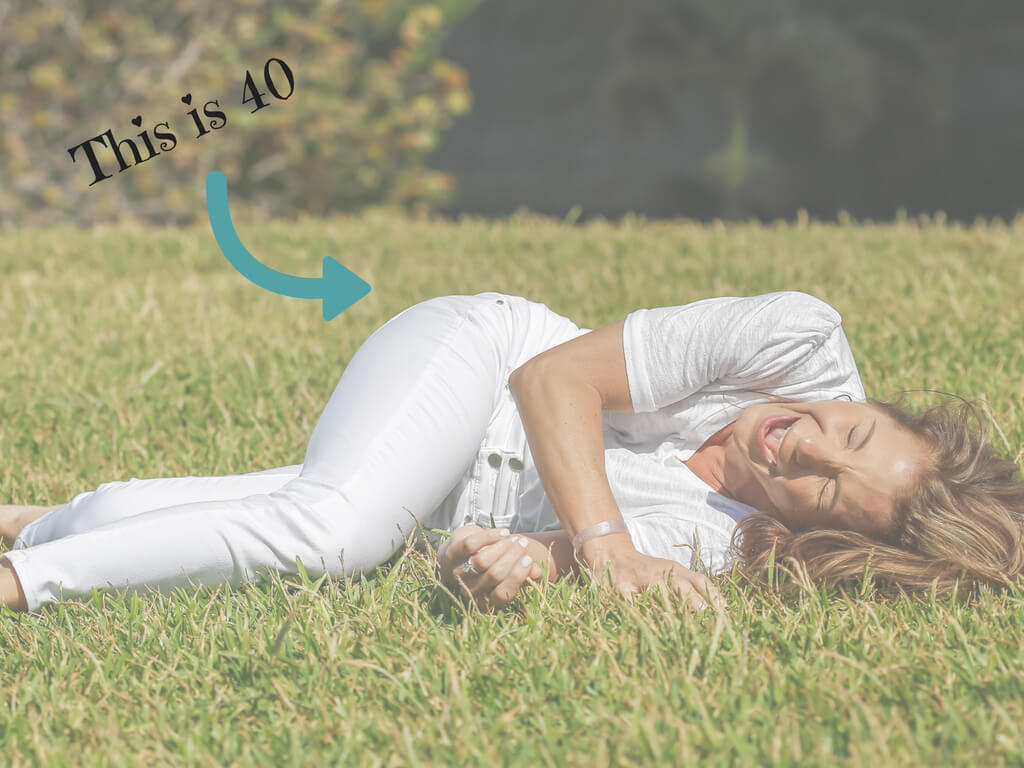
Important note: In order to receive the most accurate reading on the metabolic test you should be fasted (no food), with no exercise or caffeine within 4 hours of your test time. You can drink plenty of water – just nothing with caffeine or calories.
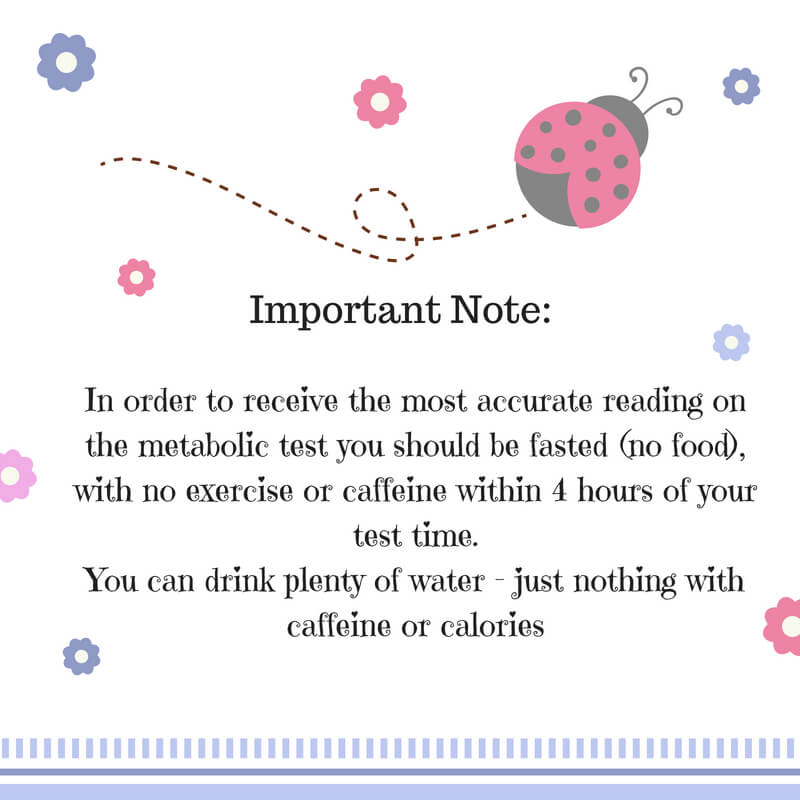
Below are the steps to redeem your discounted metabolism test:
- Click HERE and you will be re-directed to the scheduling section of this website.
- Click the link for “Metabolism Testing” under appointments.
- When the prompts ask you “with” who you would like to schedule you can choose either myself or my fabulous RD Audrey. The discount applies to us BOTH.
- Select the time slot you would like to come in for your metabolism test.
- Next put in your name, phone number and email address.
- Within the information section where it says “Redeem Coupon” put in the discount code thisis40
- Follow the prompts for payment
- Once you have provided payment you will receive an email confirmation with the date and time of your visit.
- Arrive fasted, with no caffeine or exercise within 4 hours of your test.
Our office is located at 500 Boston Post Road, Orange, CT 06477. We are in the same plaza as Hawley Lane Shoes. When you pull into the plaza look for signs for The Plano Program.
Over the next month I will be releasing more information about why having your metabolism tested is SO friggin’ important – so stay tuned for blog updates.
Please fee free to share this birthday gift with anyone who you think might benefit – which I think is pretty much anyone with nutrition related goals. After all who does not want to know their metabolism? Said no one ever 🙂
Have you ever had your metabolism tested? Did you find it helpful in reaching your nutrition related goals. Please tell us your experience in the comments below.
















